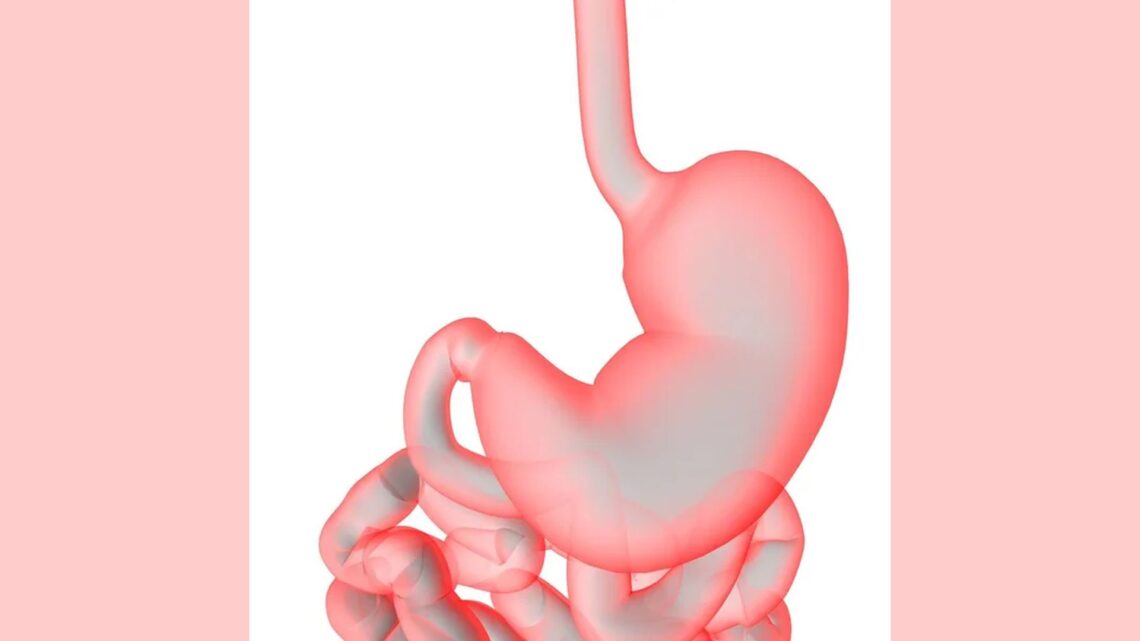Bowel nosodes prepared using micro-organisms from the gut have been used by homeopaths for over two centuries but have been in the periphery as a prescription. The therapeutic use of these nosodes has shown positive effect on the symptoms of the mind, both at the intellectual and emotional level and also on the symptoms of the digestive, circulatory, respiratory and locomotor systems. Until now, the role of bowel nosodes or how and why they influence the health of an individual has been a matter of conjecture.
With the path-breaking research findings on the human microbiota, especially the Human Microbiome Project commissioned by NIH, the functioning of our digestive system and its influence on our body and, more importantly, our mental health has come to the forefront. It has moved mind-body research to mainstream and is finding acceptance in modern medicine, in a way aligning with homoeopathic philosophical understanding of disease.
Psychoneuroendoimmunology (PNEI) is a discipline to study the relationship between immunity, the endocrine system, and the central and peripheral nervous systems and homoeopaths have been intrinsically applying it much before PNEI axis was understood.
The study can now help better understand the role and importance of bowel nosodes as an important adjuvant to homoeopathic therapeutics. Homoeopathic remedies, along with the bowel nosodes when juxtaposed with the understanding of human microbiota, holds a promise for wider and deeper therapeutic application. This also opens up the need for research to further establish the remedy relationship between homoeopathic remedies and the nosodes in terms of complementary, following well, antagonistic, and antidotal aspects.
Human Gut Microbiota
Hippocrates, a Greek physician, in his writings said, “Let food be thy medicine, and medicine be thy nourishment.” Only after the invention of the microscope did we recognise the existence of microorganisms, and subsequently, with the understanding of microbiology, did we learn that humans play a dual role. When we eat, we not only feed our bodies but also the 100 trillion germs that live on our skin, in our guts, and even up our noses.
Numerous of these microorganisms are commensal and coexist peacefully with their human hosts. They essentially guarantee their own survival in exchange for important services that are necessary for human survival —quid pro quo. The number of microorganisms inhabiting the GI tract has been estimated to exceed 1014, which encompasses approximately 10 times more bacterial cells than the number of human cells. [1]
Together, these microbes weigh between 1–2 kg, which is roughly the weight of our brain. They function as an extra organ in our body and play a huge role in our health and warrant further research.
The majority of commensal microorganisms, which are crucial to our health, and the pathogenic germs are constantly vying to colonise our guts. The pathogenic bacteria colonise an area when the soil conditions are favourable to them. The body cannot profit from the diminished commensal germs, and occasionally the neutral microbes can also become errant. The body is then more vulnerable to illness.
Bowel Nosodes
In an era when Pasteur and Koch and others were producing exceptional work in medical microbiology, including proposing the germ theory, which eventually gained wide acceptance in the scientific community, we had the French chemist Antoine Béchamp (1816–1908), who argued that microbes became dangerous when the health of the host—its “terrain” (soil) or environment—deteriorated. The Human Microbiome Project now proves that Antoine Béchamp was right.
At the same time, when the germ theory debate was raging, Dr. Edward Bach, a pathologist and bacteriologist, recognised a connection between gut flora and health. Dr Bach was intrigued after reading “The Organon of Medicine” by Dr Sammuel Hahnemann. He was struck by the similarity between the conventional vaccine theory and the law of similars.
He decided to potentize the bacteria cultures he had obtained from human bowels as per homoeopathic principles and administer them to his patients. He had earlier used these cultures in the form of conventional vaccines. After treating 500 cases over a period of 10 years, Dr. Bach reported 95% improvement with the use of nosodes over the conventional form of the vaccine. Dr. Bach published the first ever paper on this concept in 1920.
The Bowel Nosodes are homoeopathically attenuated cultures of non-lactose fermenting bacilli from the gut flora. Essentially, we have twelve bowel nosodes that have been used homoeopathically, they are: B. Morgan (Bach), Morgan Pure (Paterson), Morgan Gaertner (Paterson), B. Proteus, Sycotic Co, B. Gaertner, Dysentry Co, Bacillus No.7, B. Mutabile, B. Faecalis, Bacillus No.10 (Paterson), and Cocal Co. Although, they have been named thus, in essence, they are compounds (made up of subtypes) because pure cultures could not be isolated at the time.
Dr. John Paterson (1890-1955) and his wife Elizabeth continued Dr. Bach’s work. Paterson presented his paper titled “The Role of Bowel Flora in Chronic Disease” at the British Homoeopathic Congress, Glasgow (September 1948). Dr. Paterson studied and analysed almost 20,000 faecal samples over the course of 20 years.
He came to the conclusion that a medical condition causes clear alterations in the non-lactose fermenting non-pathogenic intestinal flora. He observed that administration of a bowel nosode led to the elimination of non-lactose fermenting bacilli with a corresponding improvement in health.
He deemed this as a healthy or good prognosis. He also noted that the removal of non-lactose fermenting bacilli in the faeces occurred even when prescribed homoeopathic medicines based on the “rule of similars”. He came to the conclusion that homoeopathic treatments also affect the flora of the gut.
He then established the empirical symptom-complex or “proving” associated with each form of intestinal nosode by correlating his observations with the clinical picture he created from the sick person after administering homoeopathic treatments.
For instance, after receiving homoeopathic Sulphur or Calcarea, a patient will pass large amounts of B. Morgan in their faeces. I.e., if a patient is given homoeopathic Sulphur or Calcarea, after the treatment, the patient sheds many B. Morgan in their stool.
Importance of bowel nosodes in light of the Human Microbiome Project
As a result of the Human Microbiome Project proving a connection between the human microbiome’s makeup and disease, the microbial composition is now employed as a significant biomarker to identify numerous dyscrasias.
We now understand that alterations in the gut microbiota have an impact on human physiology and metabolism, which can result in disease states. Findings show that diseases like diabetes, endocarditis, cancer, autoimmune disorders, and preterm deliveries all have changed microbiota.
The gut-brain axis (GBA) is a bidirectional communication system that connects the central and enteric nervous systems, connecting emotional and cognitive centres of the brain with peripheral intestinal functions. Recent research has described the importance of gut microbiota in influencing these interactions. This interaction between microbiota and GBA appears to be bidirectional, with signaling from gut microbiota to brain and from brain to gut microbiota via the neural endocrine, immune, and humoural links [9].
As a result, these factors affect mental health such as neural development, cognition, and behaviour can result in diseases like depression, autism, schizophrenia, Alzheimer’s, and Parkinson’s.
Encouraged by these findings, flora from one human to another is introduced during a Fecal Microbiota Transplant (FMT), which alters the recipient’s gut microbiota directly in order to normalise its composition and provide therapeutic benefit.
FMT is risky, despite the fact that its short-term results have been encouraging. In numerous instances, it has been found that a person has inherited the co-morbidities from a donor while also lessening the urgent situation that required the transplant.
There have been reports of personality changes in FMT recipients (both people and animals), some of which are undesirable trade-offs. Prospective donors need to be thoroughly screened. The lengthy and onerous list of inclusion and exclusion criteria for donors has a significant probability of screening error.
To counteract the negative effects of FMT, the use of immunosuppressant drugs will inevitably rise. The FMT experiment nevertheless illustrates how microbiota affect our neurological system, body, and mental health.
Bowel nosodes, however, have produced beneficial effects in both pathology and the mental plane when utilised in accordance with the “rule of similars” as it is stated in homoeopathy. Numerous homoeopaths have applied and disseminated their clinical observations and expertise over the years.
There is documentation of these cases, and the conclusions are supported by facts. When combined with the results from the Microbiome Project, this literature can be a great resource for examining the full therapeutic potential of intestinal nosodes.
In his Materia Medica of Nosodes, Dr. Paterson has listed the pathophysiological symptoms pointing to the use of a specific nosode. Let us study a few of these nosodes and correlate the indications in the materia medica with modern research.
Nosode Bacilli Morgan
The theme (keynote) for use by B. Morgan is ‘Congestion (Inflammation)’. Congestion in the cranium, the digestive, respiratory, genito-urinary, and circulatory systems, as well as in the fibrous tissues and skin, are common in patients who require B. Morgan. These people frequently have suicidal thoughts and are extremely anxious, afraid, and anxious and depressed when left alone.
The Morgan Bacillus was first found in the dysenteric stools of children. Later researchers discovered them in a variety of pathological conditions, including chronic discharging wounds, fatal septicemia, pyelitis, fatal cholecystitis, and others.
One researcher discovered Morgan Bacillus in the intestinal tracts of patients with mental disease, and he proposed that removing it from the bowel could lead to improvements in both bodily health and mental condition. [3]
Nosode Proteus
The nosode Proteus consists of bowel organisms Proteus Vulgaris and Proteus Mirabilis. Materia Medica and repertory indicates a lot of violence, rage, anger with sudden impulses along with fear of being forsaken, agoraphobia, fear of the dark.
All these sensitivities indicate it usefulness in ADHD and Autism Spectrum Disorders. Proteus Mirabilis has been isolated from urine and stool samples of autistic children and even in the stool culture of their parents. In one study, oral administration of Proteus mirabilis was found to damage dopaminergic neurons and motor functions in mice, inducing Parkinson disease. [4]
Nosode E. Faecalis
Dr Paterson matrixed the symptom complex of Bacilli Faecalis to just one homoeopathy remedy, and that is Sepia. O. A. Julian lists prostration of the mind and irritability to B. Faecalis, which is a typical Sepia state. According to homoeopathic literature, B Faecalis can be used to treat colitis, rectum and anus inflammation, dysentery (intestinal inflammation and bloody diarrhea), and allergies.
The principal site of action for this nosode is the digestive system. If we look at the sphere of action of the remedy Sepia, it involves the venous circulation with main action on the digestive tract, portal system, female pelvic organs, nerves and skin. Not surprisingly the most frequent nosocomial infection caused by the gram-positive bacteria Enterococcus faecalis is urinary tract infection.
E. faecalis are the most resilient bacteria in the root canal, able to survive even under the hardest conditions and possessing a variety of virulence characteristics that contribute to their efficacy as an infectious agent. In about 40% of instances of primary endodontic infection and up to 77% of cases of persistent or secondary endodontic infection, E. faecalis is present.
They persist by forming a bio-film resistant to even the strongest antibiotics or disinfectants. In an in vitro study, calcium hydroxide was used as an intracanal medication to compare homoeopathic treatments for root canal disinfection.
The results of the investigation showed that the homoeopathic drug Acid Benzoic 30c clearly inhibited the growth of E. faecalis in a culture plate. As a lot of dental conditions are also met by Sepia in the materia medica, it would be interesting to do a similar study using Faecalis nosode and its analog, Sepia. [5]
In yet another experiment on mice, depressive-like behavior and IBD-like pathology was induced by adding dextran sulphate sodium (DSS) in drinking water. After seven days the mice showed increased TNF-α and IL-6 expression in the rectum and hippocampus, activated caspase-3 in the hippocampus, and impaired hippocampal neurogenesis.
This was followed by the (Enterococcus faecalis) EF-2001 administration, which over 20 days was able to undo these alterations. This study again establishes a correlation between IBD and mental health (Gut-Brain Axis) and opens up the therapeutic application of the homoeopathic nosode in similar conditions. [6]
Other Research Outcomes:
A study published in the Indian Journal of Research in Homoeopathy reported positive results in treatment of cervical spondylosis. Patients were administered bowel nosode selected on the finding of their stool culture report. Nosode Sycotic Co. yielded the most favorable results [7]
Scope for Future Research and Therapeutic Application of Bowel Nosodes
We now have research that supports the role of the microbiome in the susceptibility to infectious disease, as well as many chronic diseases, including mental health. Aside from short-chain fatty acids and bile acids, recent research indicates that the metabolites produced by the gut microbiota also include neurotransmitters such as glutamate, GABA, serotonin, and dopamine.
The role of gut dysbiosis in triggering cytokine storms, as seen in COVID-19, is also being investigated. The Centre for Translational Microbiome Research (CTMR) in Sweden aims to better understand the contribution of the human microbiome to physiology and pathophysiology with the goal to open opportunities for development of novel therapies in the area of gastroenterology, reproductive health, neonatology and cancer.[12]
Given these findings, homoeopathic practitioners should become more interested in using Bowel Nosodes as an adjuvant to homoeopathic remedies. To assess the impact of bowel nosodes, a stool culture report should be one of the important pathological findings requested by the physician.
A global registry of all cases treated with bowel nosodes and homoeopathic remedies will aid in understanding the therapeutic range. As our understanding of microbiota grows, there will arise a need for more specific bowel nosodes to be developed and used.
References:
- Thursby E, Juge N. Introduction to the human gut microbiota. Biochem J. 2017 May 16;474(11):1823-1836. doi: 10.1042/BCJ20160510. PMID: 28512250; PMCID: PMC5433529.
- The role of the in chronic bowel flora disease DR. JOHN PATERSON British Homoeopathic Congress, Glasgow (September 1948)
- Jordan EO, Crawford RR, McBroom J. The Morgan Bacillus. J Bacteriol. 1935 Feb;29(2):131- doi: 10.1128/jb.29.2.131-148.1935. PMID: 16559773; PMCID: PMC545151.
- Choi JG, Kim N, Ju IG, Eo H, Lim SM, Jang SE, Kim DH, Oh MS. Oral administration of Proteus mirabilis damages dopaminergic neurons and motor functions in mice. Sci Rep. 2018 Jan 19;8(1):1275. doi: 10.1038/s41598-018-19646-x. PMID: 29352191; PMCID: PMC5775305.
- Dutta SD, Maria RD. Homeopathic consideration for resistant endodontic bacteria Enterococcus faecalis: An in vitro comparative disc diffusion study. J Conserv Dent. 2020 Sep-Oct;23(5):528-532. doi: 10.4103/JCD.JCD_515_20. Epub 2021 Feb 10. PMID: 33911365; PMCID: PMC8066670.
- Takahashi et al. Journal of Neuroinflammation (2019) 16:201 https://doi.org/10.1186/s12974-019-1580-7
- Study on effectiveness of homoeopathic bowel nosodes in the treatment of cervical spondylosis on the basis of stool culture report. Chaturbhuja Nayak, Indian Journal of Research in Homoeopathy Vol. 2, No. 1, January-March 2008
- Chen Y, Xu J, Chen Y. Regulation of Neurotransmitters by the Gut Microbiota and Effects on Cognition in Neurological Disorders. Nutrients. 2021 Jun 19;13(6):2099. doi: 10.3390/nu13062099. PMID: 34205336; PMCID: PMC8234057.
- Psychoneuroimmunology in the context of perinatal depression – Tools for improved clinical practice – Scientific Figure on ResearchGate. Available from: https://www.researchgate.net/figure/The-psychoneuroimmunology-PNI-approach-couldbe-used-to-further-inform-the-field-of_fig2_354123749 [accessed 17 Aug, 2022]
- Brower V. Mind-body research moves towards the mainstream. EMBO Rep. 2006 Apr;7(4):358-61. doi: 10.1038/sj.embor.7400671. PMID: 16585935; PMCID: PMC1456909.
- http://www.modernmedia.co.za/modernmedicine/DigitalEditions/mm2104-2105-aprilmay-2021/html5/index.html?page=22
- https://ki.se/en/research/centre-for-translational-microbiome-research-ctmr
- Materia Medica of Nosodes & Sarcodes by Dr Gaurang Gaikwad
- http://www.interhomeopathy.org/bowel_nosodes_my_clinical_experiences
- Molecular Psychiatry (2016) 21, 738–748 nature.com/mp From gut dysbiosis to altered brain function and mental illness: mechanisms and pathways GB Rogers1 , DJ Keating2 , RL Young3 , M-L Wong4 , J Licinio4 and S Wesselingh1
- Berg et al. Microbiome (2020) 8:103 https://doi.org/10.1186/s40168-020-00875-0 Microbiome definition re-visited: old concepts and new challenges







Wonderful insights. With Science-research establishing the gut/brain–brain-gut connection and literally gut-everything connections (skin, immune, lung, thyroid, muscle, reproductive, etc.), here is a deeper, more core, level of impacting the whole person via leveraging the host-microbial-epigenetic, and as Hahnemann promulgated the bacterial-genetic connection. Blessings for your insightful article.
Thank you Jack Tips. Appreciate your feedback.
Sir, it’s really an interesting article, can I contact you regarding my child’s health